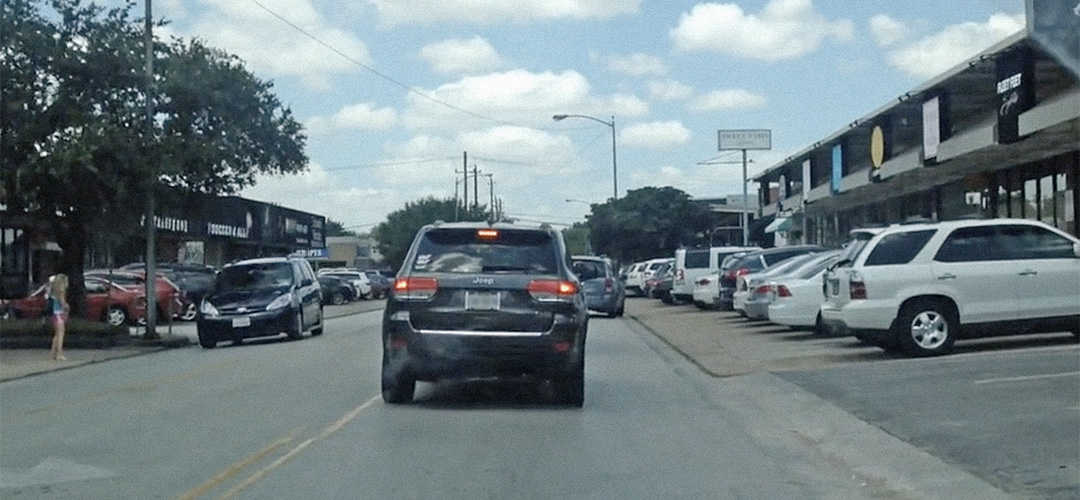The next time you find yourself driving around Rice Village searching for a parking space, I want you to remember one number: 1,000
At noon on Wednesdays – the peak of the lunch rush – there are at least 1,000 empty parking spaces somewhere in the Rice Village area.
To be clear, not all of them are accessible as you drive in circles along Rice Boulevard and University Boulevard. Many are reserved with the ubiquitous “Parking For This Business Only” or the more threatening “We Tow” signs. Others sit empty in private garages.
But the 1,000 figure is important to know because it tells us that something many of us take for granted. The idea that there’s a shortage of parking spaces in Rice Village? It just isn’t true.
What we have isn’t a shortage of parking spaces at all. It’s a shortage of access to parking, coupled with a less-than-ideal way of managing it.
We’ve laid out a number of ways that Rice Village stakeholders might think about addressing those root problems – and others – in our recent report “Rice Village: Parking, Management, and the Built Environment.”
And, no, the report doesn’t propose building a new garage. With 1,000 empty spaces or more at any time, we think another garage is unnecessary. Instead, we offer stakeholders other ways to fix the area’s parking problem without creating a single new parking space.
As the Kinder Institute began investigating the parking situation in Rice Village last April, we quickly realized the district’s challenges go far beyond parking. To frame the issues facing the Village and a to set out a list of potential solutions, we launched a pilot project of our new Vital Communities initiative. These reports do in-depth, stakeholder-informed research into how to improve Houston communities.
Rice Village made a perfect test run for this new program. It’s a popular destination among Houstonians for shopping, eating, and, increasingly, living. And many of us from the Institute eat lunch there and just wanted to know where to park.
The most direct and comprehensive way to open those 1,000 spots would be for district stakeholders to work with the City of Houston to make parking accessible to every user. This would entail parking meters to ensure turnover of spaces, contracts between private lot owners and the city, and greater management oversight. It would also mean fewer cars congesting Village streets as they circle the area in search of parking. The creation of a Parking Benefits District, where parking meter revenue is split with the district, would also produce some funding to address other pressing, interconnected issues.
But parking is just one challenge the Village could address. Two other pressing issues stood out to me as I walked around the area conducting parking counts.
First, the district lacks a recognizable identity and management approach. And second, the area’s infrastructure needs improving, especially for pedestrians and people on bikes.
The first issue – the lack of organized management and a cohesive identity – is made clear not just by the hodgepodge of parking regulations, but also from the lack of branded signage or wayfinding in the Village. A less visible problem – but one with even greater implications – is the lack of a cohesive voice from stakeholders. In short, the Village has no central advocate at the city or state level to weigh in on decisions about roads or other policies that affect its businesses and users.
In our study, we highlight potential ways the Village could address its lack of a unified voice and its limited improvement funds. A Municipal Management District, a Tax Increment Reinvestment Zone, or a Public Improvement District all represent entities through which stakeholders could raise funds for improvements and engage more directly and effectively with local leaders and fellow stakeholders.
The second issue, infrastructure, is related to management. The lack of an organized district has exacerbated problems such as crumbling sidewalks and disconnected shopping areas.
For me, the problems with the Village’s built environment became obvious the first time I tried to cross the intersection of Rice Boulevard and Morningside Drive on foot. I couldn’t get halfway across the street without a car coming dangerously close to me as it violated the rules of the 4-way stop. No drivers deferred to me as a pedestrian. When I finally made it safely across, I tripped over the badly maintained sidewalk and was left standing in the sweltering Houston heat, unprotected by either trees or a canopy.
Rice Village Parking Study from Kinder Institute on Vimeo.
Similar situations abound in the Village. Check out the video we took. Not once but twice, a mother and child jaywalk across the street and walk behind parked cars. The Village’s sidewalks are so inaccessible, narrow, and unwelcoming that people have given up on them in many cases.
There’s a lot more in the report about each of these issues and how the city and Village stakeholders might address them.
And, if you want to know where to park for lunch today – that’s in there too.

